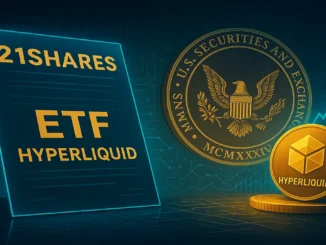
Musk’s DOGE Finds Billions in Savings
Elon Musk’s DOGE (Department of Government Efficiency) has managed to save the US taxpayer $36.7 billion in just a few weeks. A brainchild of the billionaire to slash government waste, DOGE has thrown up talks of implementing blockchain for financial transparency.
These savings represent just 1.8% of Musk’s stated aim to trim at least $2 trillion from the spending of US federal government coffers. It was in his Jan. 9 interview with Mark Penn that Musk proposed such a lean governance setup.
DOGE Success Should Drive Blockchain Government Transparency
Success attributed to DOGE in driving its application toward reducing waste in governments should open peoples’ eyes toward blockchains carrying transparency into public purse disbursement.
“Great progress DOGE,” Armstrong said in a Feb. 9 post on X, formerly Twitter, where he called for the use of decentralized ledgers to ensure public accountability.
Blockchain technology allows for publicly verifiable transactions that can reduce fraud and mismanagement in government finances. A blockchain-based treasury could also implement forced spending proposals, where funds are allocated only if the majority of citizens approve.
Musk’s DOGE Uncovers $100 Billion in Government Waste
The revelation came as Musk’s DOGE team, working in conjunction with the US Treasury, uncovered a $100 billion loophole in government spending.
Musk claimed $100 billion in entitlements were paid to individuals who didn’t have a Social Security number or any other valid identification. To him, this was “highly suspect” and he thought at least $50 billion a year, or $1 billion a week, may be pure fraud.
New Regulations to Tighten Spending Controls
According to DOGE’s revelations, the US Treasury has agreed to implement stricter financial practices by introducing:
Mandatory Payment Categorization Codes: Hitherto left blank, making audits almost impossible.
Spending Rationales: All transactions must henceforth have a justification attached to them.
Updated Do-Not-Pay Lists: Instead of updates once a year, the Treasury will update the list weekly or even daily.
Blockchain-Based Treasury: A Path to Innovation?
According to Jean Rausis, co-founder of the decentralized finance platform Smardex, on-chain US Treasury might make the country a leader in financial transparency.
Blockchain-Based Treasury: A Path to Innovation?
According to Jean Rausis, co-founder of the decentralized finance platform Smardex, on-chain US Treasury might make the country a leader in financial transparency.
“The key is to ensure the blockchain is permissionless,” “Otherwise, the promised transparency would be just a sham.
With DOGE already saving $36 billion in less than three weeks since its creation on Jan. 21, Musk’s endeavor is off and running. The agency is supposed to complete its work on July 4, 2026, the 250th anniversary of the Declaration of Independence, with a vision for a leaner, more efficient government.


